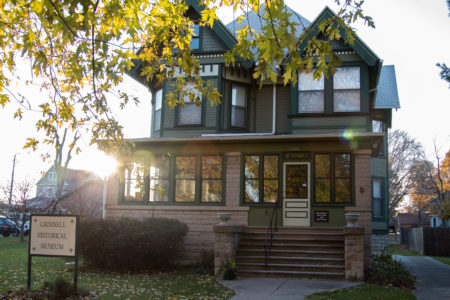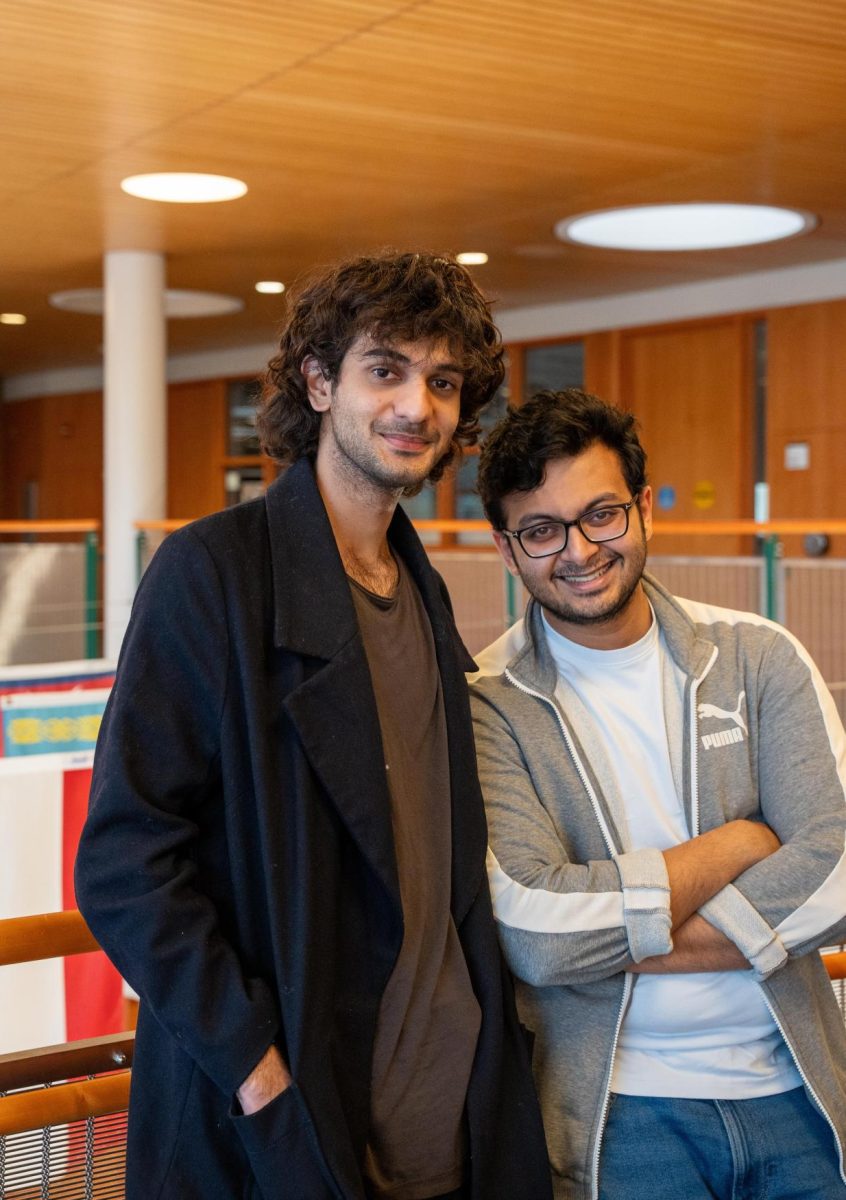From the outside, the house at 1125 Broad St. appeared to be just another residential building in a row of large, porch-laden houses. But this was before I noticed the “Grinnell Historical Museum” sign, climbed the porch and stepped inside. Immediately I was greeted by six silk top hats perched casually on a simple wooden rack in the vestibule. This display sums up the attitude of the Grinnell Historical Museum — beautiful and sometimes whimsical historical artifacts displayed unpretentiously to all who choose to enter.
Upon entering the house proper, I was greeted by Denny Conway, a cheerful volunteer docent and former school teacher. Conway emerged from a back room as soon as I stepped inside and offered to take me on a tour of the house. The Historical Museum is housed in the McMurray house, which once belonged to J.H. McMurray and his wife, a relatively wealthy Iowan couple who made their money in the dry goods business. The Museum’s exhibit is closely entwined with the design of the home. The collected artifacts are grouped according to how the McMurrays used the rooms of the house, even though they are from a different century.
Conway started off the tour by showing me an immense dark wood rollaway desk that sits at the front of the museum. Proudly, Conway told me that desk is the only known artifact left from J.B. Grinnell, the minister who founded the city of Grinnell in 1854 along with three companions. With this auspicious beginning, my tour wound through the rooms of the house, including the master bedroom with a carved Norwegian chest from the 1850s, the “Doll Room,” which displays old board games alongside multiple porcelain dolls and the “Nursing Room,” which contains a microscope, cases of medicines labeled “blood balm” and boasts three bedpans. Pointing to the jars of powder, Conway informed me that “most of them were for constipation.”
The vast majority of the artifacts displayed were donated to the Museum by past Grinnell residents and those from the surrounding area. The Historical Museum was founded by four women’s groups in the 1950s. These groups — two chapters of the Daughters of the American Revolution (DAR), the Historical and Literary Club and the Tuesday Club — submitted their idea for a historical museum to a community projects contest sponsored by the Grinnell Herald-Register. The idea was met with enthusiasm from the community, many of whom began donating artifacts to the new museum. The museum first stored these artifacts above the Candyland Gas Station but was forced to move after a fire destroyed most of the building. It then occupied a small house bequeathed to the museum by Rubie Burton. The sale of the Burton house, accompanied by an anonymous donation, allowed the museum to buy the McMurray house, where the Historical Museum has remained since 1965.

The ethos of the museum has remained the same over the years — preserving and sharing the history of Grinnell through artifacts. It has, however, grown and changed since its founding, for example, the McMurray house has become integral to its exhibit. The McMurrays were unusual for their time. They were wealthy and able to afford indoor plumbing, and the tiled bathroom features a shower and toilet, although Conway warned me that neither were in working order. The McMurrays also owned a washing machine and retained the services of a full-time maid — Kate Siehl. Interestingly, the childless McMurrays willed their house to Siehl when they died. Conway showed me Siehl’s room, which features its own set of stairs leading to the kitchen, where she would cook and serve the McMurrays in the dining room.
As we walked down Siehl’s stairs I thought the tour was ending, but the museum is even larger than it appears from the outside. Conway opened the door to the basement, which contains the “military room,” “school room” and the museum’s recently installed exhibit on “Manufacturing in Grinnell.” The Military Room contains the uniforms of Iowan soldiers that date back to every war of the twentieth century. Among the army coats is a heavily decorated German helmet captured by an anonymous Grinnellian in World War I. The manufacturing exhibit displays early models of dishwashers that were manufactured in Grinnell but, as Conway informed me, “didn’t sell very well” due to a patent issue. The basement also hosts a huge spinning wheel in the “Weaving Room,” donated by the Norris family, after whom Norris Hall is named.
These artifacts are only a small sample of the Historical Museum’s collection. Even after an hour of exploring, I still don’t think I looked at half of the artifacts, yet I learned so much about the town I walk through every day. The Grinnell Historical Museum is well worth a trip; it is a record of the history that surrounds us and a reminder of how much the world has changed. The exhibit presents an informal opportunity for reflection to be taken at the pace of the visitor. The artifacts are inconspicuous treasures, just waiting for someone to take notice. As Conway quipped to me about a small porcelain figurine: “That cat has been here for a long time, but you know what? He’s content.”




















































